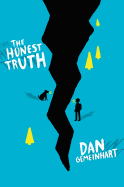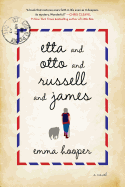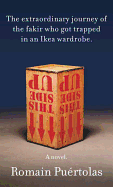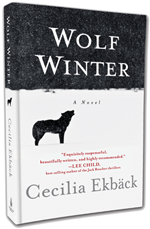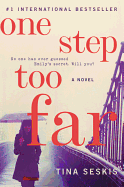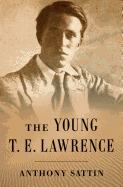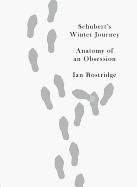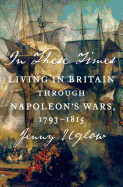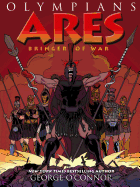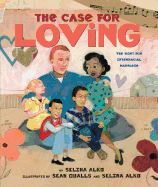Friday, January 30, 2015
Because I live in the Pacific Northwest, the end of January can feel like the farthest point from carefree summer days. The days are getting longer but not fast enough. I'm not warm enough until I'm wearing three sweaters, a blanket and a cat. These days make it easy to forget the discomforts of August--sweltering heat, stifling humidity, sunburns, dehydration--so I find myself longing for the rising peaks of the thermometer's mercury.
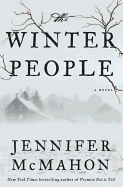 I've realized recently that I tend to read with the season. A year ago, I devoured two harrowing novels set amidst snow flurries and freezing temperatures: Jennifer McMahon's New England ghost tale, The Winter People, and Laura Kasischke's psychological thrill ride, A Mind of Winter. Then, seven months later, when Seattle temps were breaking record highs, I was entranced by Tiphanie Yanique's gripping Caribbean saga, Land of Love and Drowning, and Cynthia Bond's haunting Texas love story, Ruby.
I've realized recently that I tend to read with the season. A year ago, I devoured two harrowing novels set amidst snow flurries and freezing temperatures: Jennifer McMahon's New England ghost tale, The Winter People, and Laura Kasischke's psychological thrill ride, A Mind of Winter. Then, seven months later, when Seattle temps were breaking record highs, I was entranced by Tiphanie Yanique's gripping Caribbean saga, Land of Love and Drowning, and Cynthia Bond's haunting Texas love story, Ruby.
Maybe I can't say I always read within the current season. One never really knows a novel's climate fully before investing a certain amount of time in the book. But there's something appealing about a whiskey-soaked Southern romance when the days I'm living in are long and the sun above me is hot. Just like it's easy for me to pile blanket upon feline upon blanket and crack open the kind of book that will send shivers down my spine. Maybe I'm just a glutton for punishment. Maybe it's a type of Stockholm syndrome.
It's not something I've thought about too much before, so that makes me curious enough to risk reading outside that pattern. Meanwhile, I wonder if other people pair their reading habits the same way. Do you read hot books in the summer and cold books in the winter? Or do you read against the seasons? Reading habits are worth paying attention to. Maybe it's time to mix it up. -- Dave Wheeler, publishing assistant, Shelf Awareness
The Sasquatch Hunter's Almanac
by Sharma Shields
Does Sasquatch exist? He does for nine-year-old Eli Roebuck--he's his mother Agnes's boyfriend. The Sasquatch Hunter's Almanac, the first novel from Sharma Shields (Favorite Monster), is a charming, witty, fairytale-like story with just the right touches of magic realism and darkness.
The "almanac" has 21 chapters that cover the years 1943 to 2006, each from a different character's point of view. In 1943, Eli's "kind but aloof" mother frequently vanishes into the woods surrounding their home on the Washington/Idaho border. One day, when Eli's father was at work, Agnes tells her son that she has invited "someone who is very dear to her" to the house. In Mr. Krantz, Eli didn't see a man but an "enormous ape," whose hair smelled "like a musty bearskin rug singed with a lit match." His shoeless feet were "two hairy sleds" (thus began his obsession with feet; Eli becomes a podiatrist). Eventually, his mom walked into the woods with her suitcase and never came back.
On this clever, absurdist magic-carpet ride of Eli's long-running search for Mr. Krantz (and his mom), Shields introduces a hole with no bottom (where Eli's dog, Mother, is buried), Eli's two wives, his daughters, unicorns that bleed silver blood, lake monsters and more. A lesser writer would lose control of all this, but Shields proves her acuity with a smart narrative, great characters and an ending to die for. --Tom Lavoie, former publisher
Discover: A clever foray into a world where family, love, obsession and big, hairy feet come together in a wondrous, twisted way.
The Hidden Light of Objects
by Mai Al-Nakib
When Hayat, a Kuwaiti woman, took out a very old gift from her lost lover, "she would feel time collapse into something other than it happened to be at that moment. She would drift outside the lines in the sand, toward a glow around something she could almost make out, was on the verge of seeing clearly. It was like galloping through water or shooting up at the sun." Hers is one of many lives illuminated in Mai Al-Nakib's The Hidden Light of Objects, a debut collection of stories strung together by the common thread of longing--sometimes for the past, sometimes for peace but mostly for the preservation of memory in all its vivid freshness.
Through the voices of teenage girls and remorseful old men, Westerners in the Middle East and Middle Easterners in the West, Al-Nakib evokes a tender world that blooms bright within war-torn deserts. Her characters' concerns are simple: first loves and awkward flirtations. Yet this ordinariness serves only to sharpen the contrast of violence that inevitably creeps into their lives. Perhaps most chilling is "Playing with Bombs," in which Nimr, a 15-year-old Palestinian boy, has just begun seeing his first girlfriend. They meet in an alley at night to kiss nervously and exchange secrets. Yet theirs is a love tainted with foreboding, as Nimr narrates the story from beyond the grave.
In the midst of tragedy, memory offers the characters escape. Objects, whether stumbled upon or carefully guarded, are the keys that allow them to unlock doors into their own glittering pasts. --Annie Atherton
Discover: A collection of stories set mainly in the Middle East and centered on the themes of memory and longing.
Etta and Otto and Russell and James
by Emma Hooper
Emma Hooper's debut novel opens with Etta's note to her husband notifying him, "I've never seen the water, so I've gone there." Otto checks their globe and calculates Etta will have to traverse 3,232 kilometers--from the interior of Saskatchewan to Halifax, Nova Scotia--to see the Atlantic. "I will try to remember to come back," the note concludes. Thus begins the remarkable trek of 83-year-old Etta, whose journey advances in chapters alternating with the stories of the three best friends from childhood: Etta, Otto and their lifelong friend Russell. James, the fourth in the eponymous quartet, joins Etta as a most unlikely traveling companion.
Russell, an only child, preferred the bustling farm of Otto and his 13 siblings. Etta became their teacher at Gopherlands School at 18; World War II erupted as the boys reached draft age. Russell was deferred and remained behind, hoping to romance Etta, but her wartime correspondence with Otto led to marriage.
Now, decades later, Otto accepts Etta's journey but denies her wish to keep it a secret. When Russell discovers she's gone, he strikes out to find her and make sure she's safe. Both men act on their lifelong love for Etta, but her walking partner, James, is the surprising catalyst for Etta's reflections.
Hooper's prose--as spare as the Canadian plains, as rich as her unassuming characters--is slyly touched with the fantastical. Letters and flashbacks reveal striking histories, and the endearing protagonists embark on bold, out-of-character adventures in a style that recalls The Guernsey Literary and Potato Peel Pie Society and The Unlikely Pilgrimage of Harold Fry. --Cheryl Krocker McKeon, manager, Book Passage, San Francisco
Discover: An octogenarian's unexpected, inspirational walk across Canada, which prompts reflections on her life.
The Extraordinary Journey of the Fakir Who Got Trapped in an Ikea Wardrobe
by Romain Puertolas, transl. by Sam Taylor
French border guard Romain Puertolas's debut novel, about a con artist whose adventures kick into high gear when he inadvertently locks himself in an Ikea wardrobe, topped France's bestseller lists when it was published in 2014. This picaresque caper, which delights in puns while satirizing consumerism and the capriciousness of the immigration system, will also win over American readers.
Ajatashatru Oghash Rathod, from a remote Indian village, is on a long-dreamt-of trip to Ikea in Paris to purchase a Hertsyörbåk bed (read that name out loud) and a free stay in one of its irresistible micro-apartments. Here he meets and falls in love with the beautiful Marie and later accidentally locks himself into a wardrobe bound for England. Once in London, he is caught by immigration officials and sent to Barcelona. He escapes and, by way of a circuitous route through Vienna, Tripoli and other cities, eventually returns to Paris and (he hopes) Marie, ready for an honest life.
The Extraordinary Journey of the Fakir Who Got Trapped in an Ikea Wardrobe is a manic fairy tale peppered with wry observations and social criticism from a faux-naïve protagonist whose outsider eyes focus on the absurdities of consumer culture and regressive immigration policies. Puertolas's targets tend toward the obvious and his humor is usually slapstick, which could appeal to some older teen readers. Driven largely by a series of absurd situations that lead to an inevitable end, it charms with its exuberance and satirical sensibility. --Jeanette Zwart, freelance writer and reviewer
Discover: A French border guard's cheeky take on consumerism, love and immigration policy.
Across a Green Ocean
by Wendy Lee
Almost a year earlier, in New York, emotionally distant patriarch Han Tang died suddenly. His deep reticence led his widow, Ling, and children, Emily and Michael, on lifelong paths of isolation and disconnection. In gentle, somber prose, Wendy Lee (Happy Family) relates each family member's attempt to come to terms with Han's legacy. Ling, terrified to move on and deepen a burgeoning relationship with a widower, cannot bring herself even to mow the green ocean of her backyard, a task Han assiduously completed each week. Emily, an immigration lawyer, succumbs to the emotional toll of her work when confronted with a case that reminds her too much of her dad, and Michael, perhaps the most scarred of all, is compelled to abscond from his rundown Manhattan apartment and visit a remote part of China when he finds a letter addressed to Han from an old friend who is offering forgiveness.
Across a Green Ocean introduces strongly defined characters, each haunted in vivid ways. Michael was caught by his father while exploring his nascent homosexuality and has remained largely closeted ever since. Han's pained remark--"You are my punishment. You are what I deserve"--defines both father and son in tangled, complex ways.
The descriptions of both rural and urban China and their residents are particularly engaging, depicting the country with equanimity and fascinating details based on Lee's years living there. One character remarks that "even when they dance disco, the Chinese like to be unified." Through this moving exploration of heritage, Michael can begin to reconcile with the memory of his father. --Evan M. Anderson, collection development librarian, Kirkendall Public Library, Ankeny, Iowa
Discover: A quiet and emotionally satisfying family drama that spans decades and oceans.
The Sweetheart
by Angelina Mirabella
Angelina Mirabella's debut novel, The Sweetheart, opens with an older woman's reflections, then quickly flashes back to 1953 Philadelphia. Leonie Putzkammer is an awkward, bookish teen with no self-confidence, despite a figure her peers would kill for and some tumbling skills left over from gymnastics. When she is recruited to attend Joe Pospisil's School for Lady Grappling in Florida, a star-struck Leonie is sure everything will change. She gains a tag-team partner, Screaming Mimi, and a boyfriend, Spider, as well as an intimidating coach. Soon she is assigned a new name, Gwen Davies--later, Gorgeous Gwen Davies and, finally, the Sweetheart.
Many readers will sympathize with the older protagonist when she addresses her younger self: "What you have wanted more than anything was change... but the idea that the old life would no longer be waiting here for you is hard to accept." The heart of this story addresses questions of autonomy, self-determination and regret: how to become someone different without entirely losing your past, how to recover from making the wrong choices or even how to tell when you have made wrong choices. Told from an unusual retrospective second-person perspective and perfectly evoking 1950s culture, The Sweetheart is often hilarious but also filled with the wholly realistic yearnings and heartbreak of young-adult reinvention, and is peopled by familiar, sympathetic characters. Mirabella's impressive debut offers laughter, tears, failure, redemption, striving, success and a sweetheart we can't help but love. --Julia Jenkins, librarian and blogger at pagesofjulia
Discover: The unlikely, humorous, heartrending story of a teenaged female wrestler in the 1950s.
Wolf Winter
"It's the kind of winter that will remind us we are mortal. Mortal and alone."
In 1717, the Swedish Laplands are home to indigenous nomadic Laplanders and a mere sprinkling of Christian settlers. A new family has just arrived, fleeing an enigmatic unpleasantness in their native Finland, to take over a vacant homestead on the shoulder of beautiful but harsh Blackåsen Mountain. Frederika is 14, Dorotea six; their mother, Maija, is strong and resourceful, while their father, Paavo, is so crippled by vaguely defined fears that he seems to disappear even in the ever-present light of summer. In the opening pages of Cecilia Ekbäck's debut novel, Wolf Winter, the girls discover a dead body on the mountain: a man, with his torso torn open. Maija rushes to the scene and is told by other settlers he was killed by wolves, or a bear. But the cut is long and clean, nothing has fed upon the corpse, and she wonders. She picks up a small item off the ground nearby.
The settlers do not live close to one another; it requires a purposeful hike to visit with a neighbor. Nonetheless, there is a priest in the village--a place generally vacant, where the settlers gather for Christmas and several weeks after, as required by the King--under whose purview a murder might fall. Just as Maija feels compelled to investigate the death of a man she never knew, the priest has his own orders, and his own secrets as well.
In the autumn, as the days in this far northern land shorten, Paavo leaves to find work far away. Maija capably runs her remaining household, and frustrates her neighbors, who feel that a woman should not speak at meetings. Frederika is haunted by the dead man she and her sister found. She begins to discover certain strengths, or powers, taught by her great-grandmother. Is she being haunted, or is she calling the dead? Frederika seeks guidance from the Laplanders, who used to commune with the spirits, but they have been (nominally) converted to Christianity by the Swedish king. And the priest remains a figure of mystery: Why investigate the death on Blackåsen Mountain? What is he hiding? While always told in third person, the perspective shifts subtly, between that of Maija, Frederika and the priest.
As winter falls, there is a palpable feeling of danger on the mountain and in the scattered, tenuous community. Paavo does not write home, the cold intensifies, food is scarce. Maija feels a continuing urge to solve the mystery of the murdered man on Blackåsen, which makes her no friends, and the priest clearly has motives of his own. War looms in the background, frostbite in the foreground. Maija cannot be sure which of the Swedish settlers she might be able to trust; each time she turns to a new acquaintance, she receives a cold shoulder or an alarming intuition. Even her daughter Frederika feels unreachably distant in their tiny, draughty house. Both Frederika and Maija attempt alliances with the nomadic Laplanders who move through their lives, but each gets less than she'd hoped. And Dorotea, seemingly too small to engage in adult machinations, is in danger from the obvious as well as the most surprising and sinister of threats.
Wolf Winter's scope is enormous. Maija struggles to keep her family afloat; struggles for autonomy and reason in a community ruled by secrets, fear and corruption; and seeks a voice as a woman in her own fate. Several levels of organization push and pull against one another: the household, the loose network of homesteads, the village which is only inhabited in darkest winter, the church and state, the King's decrees and the wars he engages in--all will eventually supply tension in a story set on a sparsely populated and apparently cursed mountain.
Ekbäck imbues her tale with a sense of foreboding from the very start, and her austere writing matches the landscape: occasionally colorful but often in muted shades of gray, stark, cold and unforgiving. The range of topics touched upon--women's place in society, isolation and community, political corruption, family, the power of superstition and fear--is daunting, but Ekbäck never attempts too much. Instead, the questions her characters ask themselves do the work of the novel's examinations. Frederika struggles with her ability to see things that others do not; Maija resists such a possibility, to keep a grip on her family's survival; and the priest strains to maintain the appearance of well-being.
The strengths of Wolf Winter clearly begin in its atmosphere, masterfully chilling with its literal weather--particularly a deadly snowstorm--as well as the isolation and withdrawal practiced by almost every character. Ekbäck's pacing is expert as well, tension building as the snow rises and the settlers gather together. The characters' secrets are many, and are revealed slowly throughout, up to the final pages. Even the characters more sparingly described are engaging; the central characters are deeply, thoroughly captivating. In the end, multiple faceted mysteries add to the allure of a debut novel that is both frigidly unnerving and wise, and ultimately satisfying in its resolution. --Julia Jenkins
Mystery & Thriller
One Step Too Far
by Tina Seskis
At the start of British author Tina Seskis's debut novel, One Step Too Far, a married lawyer named Emily Coleman is running away from her family and establishing a new identity as the single Catherine "Cat" Brown, who lives in a hovel with a gaggle of roommates. Her personality and wardrobe get a complete makeover, as does her career. She lands a job answering phones at an ad agency and works her way up to account manager within nine months. Her success is tempered, however, by the dreaded anniversary of the event that sent her on the run. Can she keep up her façade as the date approaches, or will her new life unravel under the strain of her secret?
Seskis slowly doles out the details surrounding the darkness in Emily's past while keeping momentum, showing the devastation Emily's husband experiences as she tries to forget him, and moving back and forth in time to delve into Emily's family history. Frances, Andrew and Caroline--her mother, father and sister--are all flawed and often unlikable, but they are well-fleshed-out characters with clear and plausible motivations who make no excuses for their bad behavior.
The novel is touted as a psychological thriller with a shocking twist. It's more accurate to say One Step Too Far is a study of a dysfunctional family; rather than a twist, the end is an explanation of Emily's behavior that will leave readers feeling gut-punched. --Elyse Dinh-McCrillis, blogger at Pop Culture Nerd
Discover: A well-paced story of a woman on the run for a mysterious reason.
Biography & Memoir
The Young T.E. Lawrence
by Anthony Sattin
In 1928, T.E. Lawrence wrote to a friend: "Woe's me, I suppose I'll never dig again." British journalist Anthony Sattin (The Gates of Africa) tells the story of Lawrence's happiest years as a field archeologist before World War I, and the experiences that motivated his later career.
Lawrence was an obsessive, adventurous, romantic boy who loved to test his physical limits. He was fascinated by history and artifacts, cycling all over England to collect brass rubbings, plucking antiquities from construction sites, and touring France by bicycle. In 1909, as an Oxford undergraduate, he traveled to the Middle East to study architecture. While walking 30 miles a day in the summer heat and staying in the houses of Arabs and expatriates, he fell in love with the land and the people. When he graduated, he joined the excavation at Carchemish, where, despite clashes with his compatriots and local officials, he enjoyed some of the most rewarding work of his life and developed close relationships with the villagers, including a teenager nicknamed Dahoum who would become one of the most emotionally powerful figures in Lawrence's life.
Sattin has traveled extensively in the places he writes about here, and his passion for that part of the world mirrors Lawrence's. He fills The Young T.E. Lawrence with dramatic beauty, vivid characters and memorable anecdotes drawn from the letters and writings of Lawrence and his contemporaries. This is a sensitive portrait of a secretive legendary man whose favorite years were not the ones that gave him fame. --Sara Catterall
Discover: T.E. Lawrence's formative adventures as a young field archeologist and traveler.
Schubert's Winter Journey: Anatomy of an Obsession
by Ian Bostridge
In 1828, Franz Schubert, one of Vienna's most celebrated composers, wrote a cycle of songs called Winterreise, or Winter Journey, the lyrics of which are taken from a poem written by Wilhelm Müller. Ideally performed in one sitting, this 70-minute cycle has since become one of the world's most significant musical pieces for a male soloist. In Schubert's Winter Journey: Anatomy of an Obsession, Ian Bostridge, an English tenor, takes readers through Winterreise, examining each of the 24 songs.
Bostridge himself has sung Winterreise for 30 years, and he believes what Schubert accomplished is as worthy of praise and study as works by Shakespeare and Dante. In his own time, Schubert enjoyed a renown not known to many composers; but when he first performed Winterreise at an intimate gathering of friends, the reception was middling. The piece marked a departure from Schubert's previous compositions, and he focused on it with a single-minded passion, convinced even his reluctant first audience would come to love it as his best work.
Bostridge dissects and explains each song in depth, providing detailed historical, biographical and cultural backgrounds through which readers may come to understand them better. He captures how, and in many instances why, Winterreise is a singular work that has a profound effect on audiences even today. Whether explaining what the music is designed to do, and its various effects, or recalling his own experiences performing it, Bostridge shows, in a book that is just as captivating, how psychologically, emotionally and physically thrilling the composition is. --Justus Joseph, bookseller at Elliott Bay Book Company
Discover: A nearly obsessive exploration of one of the world's most beautiful songs.
History
In These Times: Living in Britain Through Napoleon's Wars, 1793-1815
by Jenny Uglow
Historian Jenny Uglow (The Pinecone) describes In These Times: Living in Britain Through Napoleon's Wars, 1793-1815 as "a crowd biography." For much of her career, Uglow has looked at the late 18th and early 19th centuries through the lens of individual lives. Here she offers a broader account of how the French Revolutionary and Napoleonic Wars affected those who remained at home. The big names of British history--William Pitt and William Cobbett, Lord Nelson and the Duke of Wellington, Sir Walter Scott and Jane Austen--appear in their proper places. But Uglow focuses on less-celebrated lives in all levels of society, from factory boy to aristocratic lady, as recorded in letters, memoirs, diaries and parish records.
In These Times is not another "day in the life" historical text. Instead, Uglow looks at how 22 years of constant warfare shaped society in fundamental ways. She not only describes direct effects of war, such as enlistment practices and the economic impact of government military contracts, but also places events that are normally described in terms of their domestic impact (such as the social disruption of the Industrial Revolution) within the context of war. She looks at newspaper distribution, shoe manufacturing, the relationship between war loans and private banking and the ethical dilemmas of Quaker gun manufacturers.
Depicting a society in which war is as pervasive as bad weather, Uglow's book combines social and military history in a manner that will appeal to readers of both. --Pamela Toler, blogging at History in the Margins
Discover: How the Napoleonic Wars shaped Great Britain, one life at a time.
Nature & Environment
Lentil Underground: Renegade Farmers and the Future of Food in America
by Liz Carlisle
Initially, readers may wish Lentil Underground were a memoir--Liz Carlisle boasts degrees from prestigious schools and is an accomplished country singer-songwriter who has opened for Travis Tritt, LeAnn Rimes and Sugarland. However, the inspiration for her agricultural exploration Lentil Underground struck when Carlisle was crisscrossing the United States, singing about rural America. As her fans described their lives, she realized she had been "lying" about the romantic agrarian life: "Big Food had all of middle America fooled into thinking that their folksy branded products were the protectors of the family farm and its wholesome values.... Farming had become a grueling industrial occupation, squeezed between the corporations that sold farmers their chemicals and the corporations that bought their grain." Carlisle decided to take a break from touring and tell the real story of farming in America instead.
She soon learned about a true hero's journey: Dave Oien from Conrad, Mont., revolutionized the farming practices of his home state with the use of legumes, which she calls the "Robin Hood of the dryland prairie" because they turn atmospheric nitrogen into rich fertilized soil and are remarkably drought resistant. Oien and a small group of committed neighbors created Timeless Seeds in 1987, a revolutionary organization that began as an experiment and became a million-dollar enterprise with products on the shelves of Whole Foods and on the tables of first-class restaurants. In Carlisle's capable hands, this story of how a few renegade farmers bucked the prevailing culture of Big Ag is riveting and inspiring. --Kristen Galles from Book Club Classics
Discover: How a few committed farmers revolutionized the soil with their responsible and ingenuous farming practices.
Children's & Young Adult
The Honest Truth
by Dan Gemeinhart
Readers will be at the edge of their seats reading this story of a 12-year-old determined to carry out his promise to his grandfather: to climb Mt. Rainier.
The last thing Mark suffers from is self-pity. He was diagnosed with cancer at age five, it went into remission, but now it's back. His best friend, Jessica Rodriguez, has stuck by him through it all, and this platonic, enduring friendship at the center of the story buoys both Mark and readers. Mark's first-person narrative alternates with the third-person account from Jessie's perspective. "The mountain was calling me," Mark begins. "I had to run away." At first, readers don't know how urgent Mark's quest is. He packs up his dog, Beau, and some supplies and heads off toward Seattle. Debut novelist Gemeinhart puts forth no romantic notions of going it alone: Mark gets beaten up and robbed, sleeps on the streets and gets kicked off a bus on which he stows away. And all along his illness drags him. But strangers also show him kindness, Beau's loyalty remains unshakable, and Mark's determination keeps him going.
Readers may feel as much empathy for Jessie as they do Mark. She's the only one who knows Mark's whereabouts, and as his parents start to unravel and a storm threatens, Jessie faces a dilemma: Does she keep her friend's secret or aid in a rescue he may not want? Gemeinhart makes each step up the seemingly unscalable mountain feel authentic. Give this to fans of Gary Paulsen's Hatchet for its boy-against-nature plot line. --Jennifer M. Brown, children's editor, Shelf Awareness
Discover: A debut novel featuring boy (and dog) against nature that will have readers at the edge of their seats.
Ares: Bringer of War
by George O'Connor
George O'Connor zeroes in on the god of War and the tensions between Zeus and his children in this seventh action-packed installment of his Olympians series.
He first contrasts Athena--a strategist of war, "of training realized and wisdom applied," rendered in a calming gray-blue palette that matches her cloak--with Ares, motivated by bloodlust and attired in sanguine vestments. However, both siblings come off as warmongers here, as O'Connor chronicles the events leading to the fall of Troy. The author-artist first flashes back to the beauty contest in Aphrodite, in which she promised Paris, prince of Troy, the hand of Helen, queen of Sparta, if he selected Aphrodite over both Athena and Hera as most beautiful. His choice made him no friends among the other gods. After Aphrodite interferes in a duel between Paris and Menelaus, king of Troy and Helen's husband, all of the gods pile on, playing out their own personal conflicts on the poor mortals' battlefield. (O'Connor brilliantly draws enemy lines around a kind of game table in Olympus, exhibiting a mock-up of Troy.) After Thetis begs an apathetic Zeus to spare her son, Achilles, she then appeals to Hephaistos, husband to Aphrodite, who gives her impenetrable armor, and also (in a dramatic sequence of panels) bests Scamander, god of the river of Troy, on behalf of Achilles.
In the kind of surprise twist that characterizes this outstanding series, O'Connor does not make the entrance of the Trojan Horse his climax. Rather, he concludes with a thought-provoking scene between Zeus and Ares. --Jennifer M. Brown, children's editor, Shelf Awareness
Discover: In the seventh in the Olympians series, the Trojan War is a microcosm of the feud between the gods of Olympus, with Ares front and center.
The Case for Loving: The Fight for Interracial Marriage
by Selina Alko, illus. by Selina Alko and Sean Qualls
Selina Alko (B Is for Brooklyn) recounts the landmark 1967 case Loving v. Virginia as a quest by two people who want to raise their interracial family in their hometown of Central Point, Va., where their marriage is "unlawful."
Alko frames complex themes in the simplest terms. "Donald, Peggy, and Sidney had two parents who loved them, and who loved each other," she begins. Gouache and acrylic paints depict the swirling grays of their front stoop, a heart-colored pink door, and the three siblings playing with toys as their parents' watch. Collage elements depict music wafting from inside, accompanied by birds and butterflies. Husband-and-wife team Selina Alko and Sean Qualls (Dizzy) convey the bond between Mildred Jeter and Richard Loving in every composition, from that opening family portrait to the final image when they've won their case. Even as the artists introduce them--he's "a fair-skinned boy who got quickly sunburned in July," and she has "skin a creamy caramel"--their individual portraits are two in a town "where people every shade from the color of chamomile tea to summer midnight made their homes."
Aware that they couldn't be legally married in Virginia, Loving and Jeter wed in Washington, D.C., then returned to Virginia to make their home. They were soon arrested. A series of collage spreads chart their progress through the U.S. Supreme Court Building and, full circle, with the family reunited on the stoop where they started, "Happily (and legally!) ever after." In this uplifting tale, love truly conquers all. --Jennifer M. Brown, children's editor, Shelf Awareness
Discover: A picture-book rendering of a landmark civil rights case that boils down complex issues to its essence as a love story.




